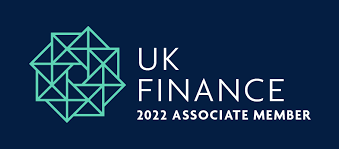
From Risk to Resilience: Using Bad Debt Protection to Safeguard Growth
Content
High-interest rates and an uncertain economy are pushing more businesses into financial distress. Debt defaults by UK companies remain high as rising borrowing costs, squeezed profit margins, and delayed payments squeeze cash flow across many sectors. Consequently, B2B businesses must strengthen their financial structures and build resilience against bad debt.
In this environment, bad debt protection is gaining increased popularity as insurance against payment defaults from business customers.
This article explores the nature of bad debt protection with answers to frequently asked questions. Keep reading to discover the advantages of using this easy to manage financial strategy to increase liquidity and mitigate bad debt.
What is bad debt protection?
As high levels of business closures continue and payment defaults remain a significant concern, bad debt protection provides a layer of insurance against non-payment. This means that if a business’s customer(s) fails to pay invoices, guaranteed payment ensures up to 90% of the payment due is covered. It’s an assurance that you will get paid despite your customers’ vulnerability to distress. This protection is critical to maintain financial stability in down markets and volatile industries.
How It Works in Practice
- Identify Your Needs
- Decide which receivables/invoices or customers you want protected. You might choose to cover your entire sales ledger, or just specific customers.
- Determine the percentage of value you want insured / the maximum amount per customer (“limits”).
- Apply for Protection / Insurance
- Fill in an application with details of your business, your customers, outstanding invoices, credit terms, etc.
- The insurer (or financier) assesses the credit risk of your customers to set limits (how much protection per customer/invoice).
- Set Premiums / Fees
- You pay a premium or fee, often based on the volume/value of invoices, credit risk of customers, and coverage level.
- Activate the Protection
- Once approved, the protection kicks in.
- The policy will outline the conditions under which claims are valid (e.g. customer insolvency, protracted default, timeframes, exclusions).
- Ongoing Monitoring & Customer Management
- Provide invoice data, keep records of overdue invoices, inform the provider about any warning signs (late payments, credit issues) with customers.
- Making a Claim
- If a covered debtor fails to pay (due to insolvency or long default per the contract), you submit a claim with supporting documentation.
- The insurer or provider evaluates the claim and pays out a percentage of the invoice value (commonly up to 90% of net value) depending on policy terms.
Use case example
A UK-based machinery & equipment manufacturer was concerned about growing credit risks from clients that could severely impact cash flow and profitability. To assist sales efforts and help combat competition, invoices went out on credit terms, impacting cash flow and increasing credit risk. Even a few late or unpaid bills could have outsized consequences for the manufacturer’s financial stability.
As part of a comprehensive strategy to mitigate the risk of bad debt, the manufacturer implemented a bad debt protection arrangement with a provider experienced in their sector.
This policy provided:
- Protection against bad debts due to client insolvency or extended default.
- Customer credit risk analysis and monitoring, giving the company insight into clients’ changing risk profiles.
- Confidence to extend credit safely to a broader customer base.
Benefits & Outcomes:
- Reduced Exposure to Bad Debt:
If a covered client fails to pay due to financial distress, the provider covers 90% of the loss (minus agreed retention), mitigating a significant hit to cash flow. - Improved Credit Decisions:
With access to credit reports and early-warning alerts, the manufacturer avoided risky contracts and tightened terms where necessary, reducing likelihood of non-payment. - Business Growth:
Empowered by insured receivables, the manufacturer launched into new customer relationships, expanded internationally, and chased larger contracts—without the fear that unpaid invoices would jeopardize operations.
Conclusion
As UK businesses face rising borrowing costs, shrinking margins, and unpredictable cash flows, bad debt protection offers more than just insurance—it’s a strategic tool that can safeguard liquidity, support growth, and restore confidence. By choosing protection tailored to your business, applying prudent credit risk management, and staying proactive in monitoring customer behaviour, you can reduce the financial risk of non-payment, protect your cash flow, and unlock opportunities that otherwise might seem too risky. In volatile times, bad debt protection isn’t just nice to have—it’s increasingly essential for resilience.
Contact us to explore how bad debt protection can be tailored to your business and help your business secure greater liquidity and build financial resilience.
Key Takeaways
- Debt defaults by UK companies remain high as rising borrowing costs, squeezed profit margins, and delayed payments squeeze cash flow across many sectors.
- In this environment, bad debt protection is gaining increased popularity as insurance against payment defaults from business customers.
- If a business’s customer(s) fails to pay invoices, guaranteed payment ensures up to 90% of the payment due is covered. It’s an assurance that you will get paid despite your customers’ vulnerability to distress.


